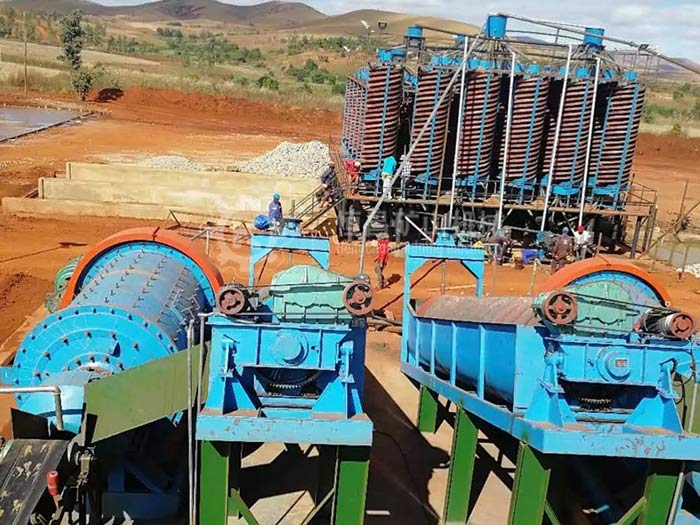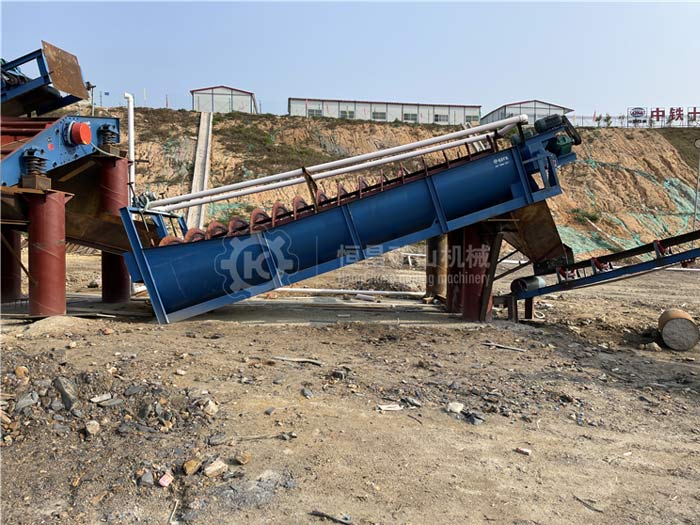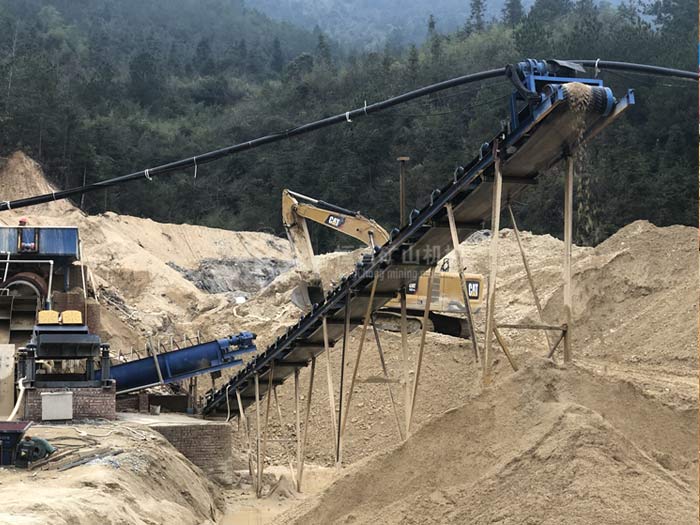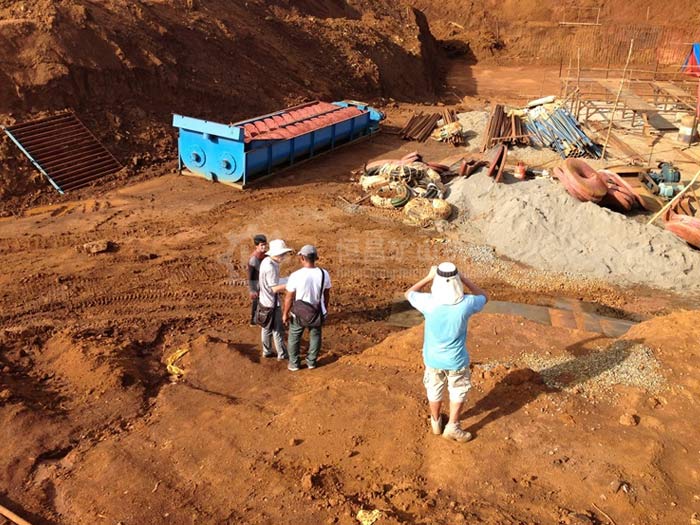What are the factors that affect the efficiency of the classifier?
2022-09-19 10:27:44

1.The mud content and particle size composition of the feed to the classifier. The more sludge or fine grades in the feed of the classifier, the greater the viscosity of the pulp, the smaller the sedimentation velocity of the mineral particles in the pulp, and the coarser the size of the overflow product; in this case, in order to ensure the If the overflow fineness meets the requirements, the supplementary water can be appropriately increased to reduce the slurry concentration. If the mud content in the feed is small, or it has been subjected to desliming treatment, the slurry concentration should be appropriately increased to reduce the excessive fine-grained materials entrained in the returned sand.
2. The density and particle shape of the ore. Under the same concentration and other conditions, the smaller the density of the material in the classifier, the larger the viscosity of the ore pulp, and the coarser the size of the overflow product; on the contrary, the higher the density of the material in the classifier, the smaller the viscosity of the ore pulp, and the larger the size of the overflow product. becomes finer, and the fine-grained content in the returned sand increases. Therefore, when the density of the classifier is high, the concentration of the classifier should be appropriately increased; and when the density of the classifier is small, the concentration of the classifier should be appropriately reduced. Since flat ore particles settle slower than round or nearly round ore particles, a lower slurry concentration should be used in the classifier, or the discharge rate of the overflow product should be accelerated.

3. The inclination of the slot of the classifier. The inclination angle of the trough not only determines the settlement area of the classifier, but also affects the agitation degree of the new blade to the pulp, thus affecting the quality of the overflow product. The inclination angle of the tank is small, the sedimentation area of the classifier is large, the overflow particle size is finer, and the fine particle content in the returned sand increases; on the contrary, the inclination angle of the tank increases, the settlement area decreases, the coarse-grained material has more chances to slide down, and the overflow particle size increases. Coarse, but the sand return is less fine. Of course, after the classifier is installed, its inclination angle does not change, and it can only adapt to the determined inclination angle in terms of operating conditions.
4. The height of the overflow weir. Adjusting the height of the overflow weir can change the size of the settlement area. When the overflow weir is increased, the settlement area of the ore particles can be increased, and the volume of the classifier area can also be increased. Therefore, the agitation degree of the new type of slurry surface is relatively weak, which makes the overflow particle size smaller. When the overflow particle size is required to be coarse, the height of the overflow weir should be reduced.

5. New speed. The new rotational speed affects not only the particle size of the overflow product, but also the ability to transport grit. Therefore, when choosing a new speed, the requirements of overflow fineness and sand return productivity must be met at the same time. The faster the rotation speed, the higher the production capacity in terms of returning sand, but because the stirring effect on the pulp becomes stronger, the coarse particles entrained in the overflow increase, which is suitable for the classifier machine used in the rough grinding cycle. The classifier machine used in the second stage grinding or fine grinding cycle requires a finer overflow product, and the new speed should be slowed down as much as possible.
6, pulp concentration. The pulp concentration is one of the most important adjustment factors in the operation of the classifier, and it is usually used to control the overflow fineness of the classifier in production. Generally speaking, the slurry concentration is low, the overflow particle size is fine, the concentration increases, and the overflow particle size becomes coarser. This is because in the thicker pulp, the viscosity of the pulp is larger, the particle settlement is greatly disturbed, and the settling speed is slowed down. Coarse overflow particle size. However, when the slurry concentration is very low, the overflow particle size may become coarse. This is because the concentration is too low. In order to maintain a certain production capacity calculated by solid mass, the amount of pulp must be large, resulting in an increase in the flow rate of the pulp in the classifier, thereby flushing the coarser particles to the overflow. go in the flow. Therefore, in actual production, for the classifier that processes the specified ore, there is a suitable slurry concentration of the classifier. At this suitable concentration, when a certain classifier particle size is maintained, the maximum production can be obtained; and when a certain productivity is maintained, the smallest separation particle size can be obtained. This concentration is called the critical concentration. The actual production critical concentration value should be determined by testing and referring to the indicators of the classifier operation in a similar concentrator.

7. The amount of ore feeding and the uniformity of ore feeding. When the slurry concentration is constant, if the amount of ore fed into the classifier increases, the upward flow velocity and horizontal flow velocity of the slurry also increase, thus making the overflow particle size coarser. Conversely, when the amount of ore decreases, the overflow particle size becomes finer, and the fine particle content in the returned sand increases. Therefore, the ore feeding amount of the classifier should be appropriate, and it should be kept uniform and stable, so that the classifier process can be carried out normally and a good classifier effect can be obtained.